Find your bike’s perfect wheel size with our advanced Bike Wheel Size Calculator. Whether you ride on roads, trails, or in the city, the right wheel size ensures a smooth and enjoyable experience.
Calculated Results:
Wheel Diameter: mm
Wheel Circumference: mm
How to Use the Bike Wheel Size Calculator:
- Input Fields: In the calculator, you will see two input fields labeled “Rim Diameter (mm)” and “Tire Diameter (mm).” These are the values you need to provide for the calculator to work.
- Enter Values: Enter the diameter of your bike’s rim in millimeters in the “Rim Diameter” field. Similarly, enter the diameter of your bike’s tire in millimeters in the “Tire Diameter” field. You can find these values usually written on the sidewall of your tire or in your bike’s specifications.
- Calculate: After entering the values, click the “Calculate” button. The calculator will process your input and provide you with the calculated wheel diameter and wheel circumference.
- Results: The calculated results will be displayed below the “Calculate” button. The “Wheel Diameter” will show the diameter of the bike wheel in millimeters, and the “Wheel Circumference” will show the circumference of the bike wheel in millimeters.
Example Scenario:
Let’s say you have a bike with a rim diameter of 635 mm and a tire diameter of 23 mm.
- In the “Rim Diameter (mm)” field, enter: 635
- In the “Tire Diameter (mm)” field, enter: 23
- Click the “Calculate” button.
The calculator will process the input and display the following results:
- Wheel Diameter: 681.00 mm
- Wheel Circumference: 2139.42 mm
This means that with a rim diameter of 635 mm and a tire diameter of 23 mm, the calculated wheel diameter is 681.00 mm, and the wheel circumference is 2139.42 mm.
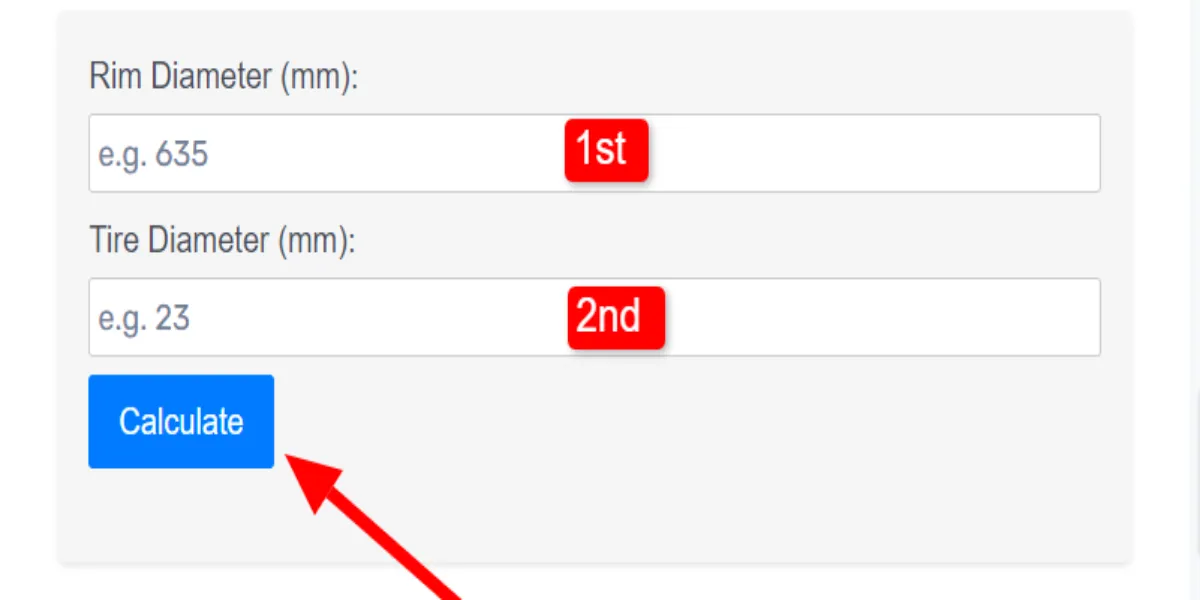
How To Measure Bike Wheel Size
You can determine your bike’s wheel size in either of these ways; some require the aid of a bike dealer, and some do it yourself. Let’s start with the easiest one:
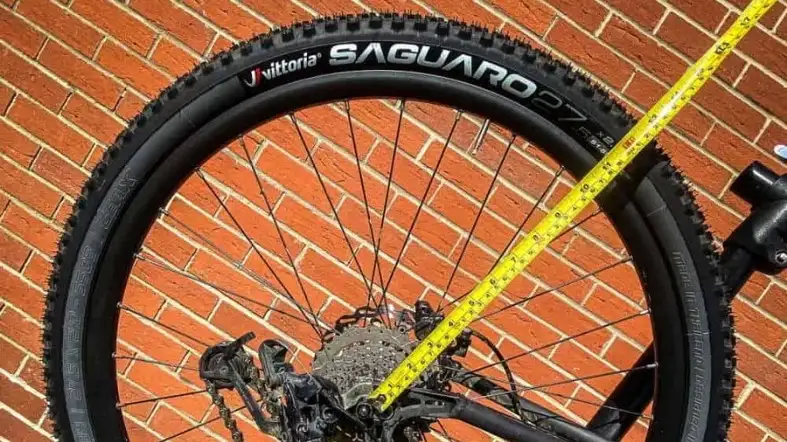
Ask The Bike Shop
Simply visit the nearest bike store, find the preferred size bike, and ask a bike dealer about the size of the bike wheel.
Vendors have all the exact specifics of the bike they have and can inform you quickly about the certain size bike wheel.
They’ll also inform you what size bike wheel you have and aid in the replacement required.
Check The Wheel’s Printed Parameters
Currently, most bike wheels come with a size parameter mentioned on the tire. If you are unable to find bike information online, this is your convenient option.
Luckily, manufacturers must follow regulations to display information on the tires, even if it is a mountain bike.
According to the ETRTO, the information consists of 5 digits and the formation is like XX-XXX.

Here, the first two digits refer to the width of the wheel in mm, while the last three digits tell us about the inner diameter of the tire in mm.
For instance, the code 32-622 on a bike tire means it is 32 mm wide and the diameter is 622 mm. Remember, the diameter of the tire is crucial.
Some bike manufacturers also display the information in diameter x width format.
So if you find 27 × 1.75 on your bike’s tire, it means that the diameter of the wheel is 27 inches and the width of the tire is 1.75 inches.
Measure By Yourself At Home
So if you don’t want to visit a bike store or are willing to do it yourself, you still have plenty of options to apply.
Using The Standard Method
Stand The Bike Upright

First of all, lean your bike against a wall or kickstand it to stand upright.
This will let you measure the bike wheel, conveniently avoiding tipping the bike onto you.
Use retractable metal tape instead of plastic tape to measure with one hand, especially if you are doing the job alone.
Measure the distance
Measure the distance between the ground under the tire and the bike’s wheel point center in inches.
This way, you’ll have half of the diameter or wheel radius. Then multiply the number by 2 to get the entire diameter of the tires.
The diameter of most adult bikes’ wheels is between 26 and 29 inches, except for BMX models.
Despite this, if you are measuring the wheel size of your mounted bike, inspect the sidewall to get the measurement.
Measure the Tire’s Flat Part
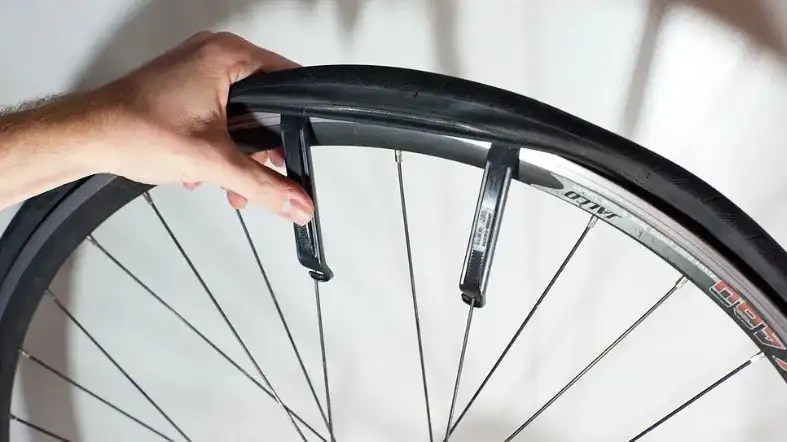
To determine the width of the tire, measure its flat part across the tread from one end to the other.
The width of the tire can vary depend on the intended use of the tire.
A general rule is that wider tread is better suited to rougher terrain, while narrower tread is better suited to a smoother and faster rise.
Figure Out the Wheel Size
Once you collect all the information, put it in the proper form by following the standard rules.
It means putting the diameter first and then writing the width following the formation mentioned above.
Using The ISO Method
Check The Bike’s Measuring System

The International Organization for Standardization (ISO) measures in millimeters to indicate the bike wheel size.
So check your bike if its wheels are measured following the ISO system.
If your measurement tape doesn’t measure in metric rules, multiply the inches by 25.4 to get the measurement in ISO.
Typically, most tires are measured in both ISO and standard methods, and the information is displayed on the sidewall.
Stand the Bike Upright
Following the previous method, stand your bike upright. Then measure the distance between the wheel’s center and the inner end of the tire and multiply by two.
The diameter of most adult bike tires ranges from 650 to 700 mm in the ISO system.
The measurement also includes the diameter of the bead seat and the width of the tire.
Measure The Tire’s Width
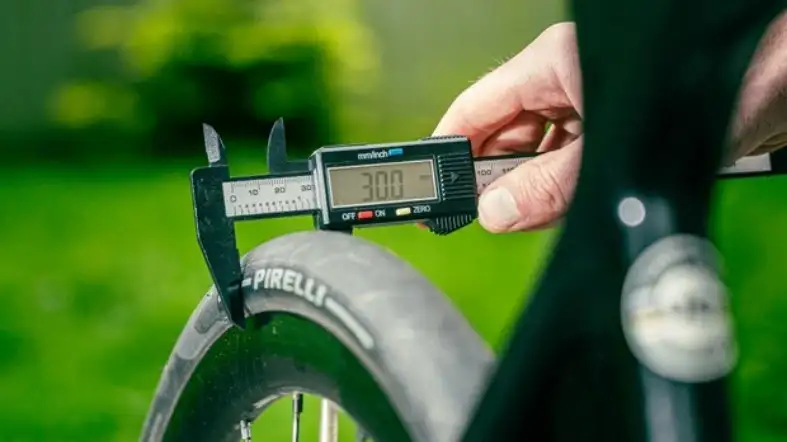
Apply the same technique across the tread from one side to the other.
Remember, the same bike wheel may have different-width tires. So if you find a different result, don’t panic.
Create proper formation
Tires measured using the ISO system have a width in the first place and a diameter in the second.
So note your measured width first and then the diameter to avoid messing up.
For example, a bike wheel sized 39 x 700 means its width is 39 mm and the diameter is 700 mm from one end to the other. In addition, its BSD is 622 mm.
Calculating The Bike’s Wheel Circumference
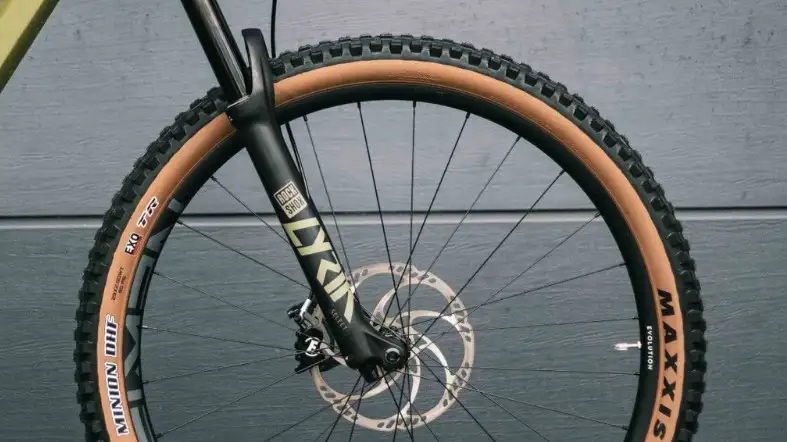
If you want to calibrate a bike odometer, GPS, speedometer, or computer properly, you should know the bike wheel circumference.
It’s a distance around the outside of the bike wheel. It is essential to set the bike equipment based on the tire size.
In addition, knowing the wheel’s circumference is also crucial to calibrating an existing cyclometer or changing the tire with different-sized treads.
Measure the circumference
You can easily calculate the circumference by multiplying the diameter of the tire by pi.
And you can do it quickly if already know the tire’s diameter from the outer end of one side to the other.
For example, multiply your 26 inches of tire by 3.1416 and the circumference you’ll get is 81.64 inches.
Despite this, you can discover the circumference of your tire on various online charts simply by matching the diameter and width.
Calculate the circumference with a string
If you don’t know the diameter of the wheel, this alternative option can help you measure the circumference.
Simply wrap a string around the outer corner of the tire and mark the place where it arrives back. Then measure the length to figure out the circumference.
Mark A Spot On The Bike’s Tire Tread
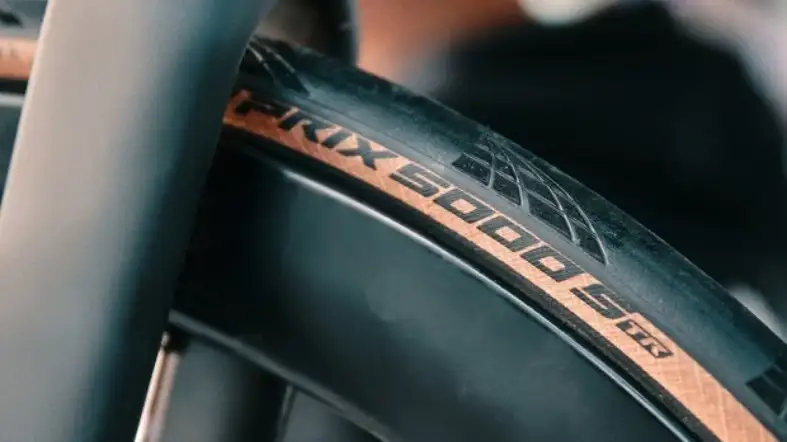
Another alternative is to use a drop of wet paint on the tire and push the bike in a straight line for a minimum of 2 rotations to mark the ground twice.
Then calculate the distance between the first spot and the last to measure the circumference of the tire.
Most Common Bike Wheel Sizes
Bike wheels and tires come in a wide range of sizes and range from 12 to 36 inches.
However, the standard size bike wheel is 26 inches or 559mm and 29 inches or 622mm.
However, sometimes, standard 29 inch or 622 mm bike wheel is considered a 700c wheel.
Despite this, a bike with 24 inches or smaller wheels is considered a kid’s bike, while a bike with 30 inches or larger wheels is an adult bike.
Different types of bikes, including touring bikes, gravel bikes, road bikes, and mountain bikes, come with standard-size wheels.
Standard sizes bicycle wheels and tires come in 26 to 29 inches. Standard wheel equipped on road bikes and mountain bikes. Some of them are:
26-Inch Bike Wheels

Currently, 26-inch wheels are standard for high-performance folding bikes, hybrids bike, as well as off-road mountain bikes.
However, this size was first considered the standard size for road cruisers early in the 20th century.
According to the ISO measurement, the wheel size is 559 mm. In addition, it’s also a compact wheel that includes a deeper angle of attack.
Hence, the 26-inch wheel can’t move over obstacles as effectively as the 29-inch wheels.
But a bike with 26-inch wheels has less drag and turbulence compared to a bike with larger wheels, as it requires fewer spokes.
As a result, a 26-inch wheel bike can achieve a high top speed along with quick maneuvering and fast acceleration.
27-Inch Bike Wheels

The 27-inch wheel is considered an in-between standard size.
Many road bikes, mountain bikes, and hybrid bikes come with 27-inch wheels and are standard for road bikes.
According to the ISO, the measurement is 630mm.
Some bikes also have 27.5-inch (or 650B according to French standards) wheels that ensure optimum balance between narrow-angle of attack and lightweight design. Hence, this wheel size is considered the standard size for mountain bikes.
The 650B bike wheel design has a larger wheel weight and includes more spokes for improved stability.
Apart from that, it also comes with small dimensions to deliver high top speeds and faster acceleration without compromising on trail obstacles.
29-Inch (700C) Bike Wheels
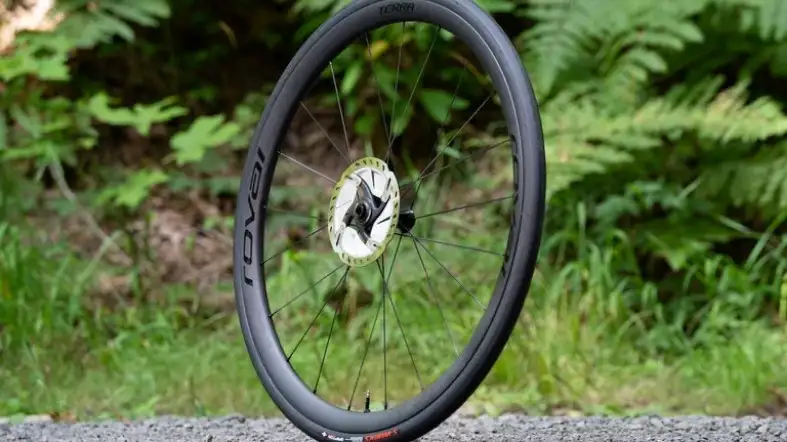
Typically, 29-inch or 622 mm bike wheels were known as 700C due to their interchange rim size and 700 mm outside diameter.
However, the French sizing system is now invalid.
Nowadays, 29 inches is the standard full-size wheel and is equipped on almost all adult-sized road bikes all over the world.
In addition, 29-inch wheels are also a popular option, particularly on folding pavement bikes.
A 622 mm wheel is also considered the largest standard bike rim size that provides around 12% more static weight compared to a 26-inch wheel. It means this size wheel keeps the bike more stable on the road.
In addition, the 29-inch wheel has a considerably flat angle of attack, making it best for rolling over obstacles.
But it’s not the best mountain bike as its extra drag lowers the control and acceleration.
The Largest Bike Wheel Sizes

Apart from the standard, some non-standard wheel sizes can be either large or small to fit specific needs.
The key benefit of using the largest bike wheel size is that it hits a low angle of attack to handle trail obstacles conveniently.
It also ensures higher stability as it maintains more ground contact and delivers increased spokes.
Another exciting benefit is consistent speeds as the increased weight delivers more drag.
Some common oversized bike wheel sizes are
32-Inch Bike Wheels
The 32-inch or 686mm wheel is rarely used in production bikes.
A bike that has a 30 inch or larger wheel is mostly considered a custom model and is especially intended for the rider who is over 6’6″ in height.
For example, Shaquille O’Neal’s custom 32-inch bike wheel.
36-Inch Bike Wheels
Though a three-foot-diameter wheel is unnecessary for the average person, it’s highly essential for a taller person for basic cycling.
A 36-inch or 787mm bike wheel is also uncommon and isn’t available in production frames.
So, if you are taller and require this diameter wheel, you must use custom frames.
The Smallest Bike Wheel Sizes

If you are a traveler and need a folding bike or a BMX cyclist and need improved control over movement, a smaller wheel-size bike is your ideal option.
Apart from that, smaller wheel bikes offer faster acceleration and greater top speed due to their lighter design and low drag.
The bike also ensures precise control and is very efficient for transport.
Some smallest wheel sizes are:
16-Inch Bike Wheels
The 16-inch wheels are mostly found on kids’ bikes. However, all smaller bikes aren’t only for kids.
It means there are some special uses for 16-inch bike wheels and they are also equipped on adult compact folding bikes.
Though the primary goal was to make a lighter model for ease of travel, the 16-inch wheel also offers better ride quality.
The downside of a 16-inch bike wheel is that it can affect the little obstacles adversely on the road.
It is also difficult to handle during riding on the hill as it requires a higher gear ratio.
The turning ratio of the 305mm wheel is also small, making it problematic to handle and making the steering oversensitive.
However, you can take advantage of oversensitivity, especially if you are a BMX biker and need better control over the steering column.
20-Inch Bike Wheels

20-inch bike wheels are commonly equipped on folding bikes and BMX bikes.
If you are a casual driver and want to ride a folding bike initially, using a 20-inch bike wheel will be convenient for you for some reason.
However, its extra-long handlebar stem can make it problematic to handle in a small turn radius.
Conversely, a 20-inch wheel bike is perfect for BMX bikers who seek an extra-sensitive steering column to enjoy aerial tricks.
24-Inch Bike Wheels
Though it’s not rare, a 24-inch wheel is mainly equipped on junior mountain bikes as well as BMX bikes that are intended for larger riders.
FAQs about Wheel Size Calculator Bike
Are Bike Wheels Universal?
No, bike wheels aren’t universal and come in a wide variety of sizes. However, bike owners can’t choose any size wheel for their bikes. A bike owner can make a little bit of an adjustment to the wheels or tire size. But using too small or big wheels can damage the bike.
How To Choose The Right Wheels For A Road Bike?
When searching for a wheel for a used bike, first check its size carefully. In general, road bike wheels come in 29 inches (or ISO 622mm). Despite, considering and comparing the wheel types, bearings, and spokes.
What Is The Most Popular Bike Wheel Size For Road Racing?
The 29-inch bike wheel is the most popular size for road racing bikes as it ensures comfort and better cornering grip.
Final words
After having a clear and brief idea of a wheel size calculator bike, I hope picking the right bike will be a simple task for you.
A right-sized bike is crucial for safe riding while enjoying greater control over speed and movement during climbing on any terrain.
Choosing the right size bike for certain users largely depends on the wheel size along with age and skills.
So now you should be able to calculate the right size wheel accordingly to enjoy the great experience.
